Management plan areas - Figure: havforum.no
Future management of marine areas
By: Ørjan Holm
In a separate report to the Storting in 2020, the government will present a revision of the management plan for the Barents Sea and the sea areas outside Lofoten, as well as an update of the management plans for the Norwegian Sea and the North Sea/Skagerrak. The Danish Environmental Protection Association is afraid that the petroleum and offshore wind industries will establish themselves in new areas with disadvantages for fisheries, seabirds and vulnerable areas.
The battle for the areas
The sea areas outside the coast have been used for catching and fishing since time immemorial. Norway has great resources in the form of fish, seabirds, marine mammals and almost untouched unique nature, both above and below sea level. In recent decades, researchers have also found unique and vulnerable cold-water coral reefs in several places along the coast. We have 20 bird cliffs, of which 18 are in northern Norway. We are talking about 100,000 pairs of several different species. Seabird populations have been in decline for many years. The seabirds are vulnerable and several species are now directly threatened with extinction. Since the 1970s, the petroleum industry has established itself along the coast, especially in the North Sea. The industry is creeping north and constantly requires new areas. The industry displaces the fisheries and pollutes both directly and indirectly through chronic emissions. Fishing is not compatible with petroleum activities. An oil spill would be an environmental disaster for both fisheries and seabirds. Offshore wind is also an industry that demands its areas. The fisheries are under pressure from all sides
Climate changes
Today's ongoing man-made climate change has already become a challenge for most people. In the sea, climate change has also begun to make itself felt. Increased sea temperatures have already led to more heat-loving fish species, such as mackerel, changing their habitats and spreading northwards. Northern species such as polar cod are displaced north-eastwards and have smaller living areas. This will change the various marine ecosystems one by one. In future management of the sea areas and the resources found there, one has to take into account the changes that are known to occur and the uncertainty this also entails.
The reaction of fish species to climate change
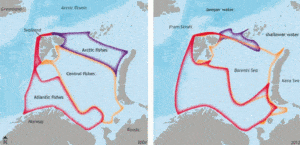
Source: Climate.gov.
Petroleum business
The petroleum industry is constantly looking for new areas to search for oil and gas. The challenges already start in the exploration phase. Seismic surveys in the sea are a strong sound pollution, which will displace both fish and marine mammals away from their grazing and spawning areas. In the worst case, this can cause hearing damage to both fish and marine mammals. Sound communication between marine mammals is widely known and it would be a disaster for them if their hearing were damaged. Marine mammals also use sound in connection with searching for food. The establishment of a drilling platform will require areas that will displace the fisheries.
In Fiskebåt's, the sea fishing fleet's organisation, consultation opinion on the Government's proposal for predefined areas (TFO 2019) for exploration for oil and gas, it is clear that the proposed areas, especially in the Norwegian Sea and the Barents Sea, are in direct conflict with important fishing areas. Mørebankene is an important spawning area for, among other things, Norwegian spring-spawning herring. In addition to damaging the herring, an oil spill could have consequences for all those who graze on the species. The sea areas of Lofoten/ Vesterålen and Senja, Nordland VII and Troms II are areas that must be protected against oil drilling for the foreseeable future. Lofoten is the cod's birthplace. In addition, the areas have particularly important natural resources in the form of, among other things, bird cliffs, coral reefs and outdoor areas. When the operation on the possible oil platform is underway, there will be continuous chronic discharges of environmentally toxic waste, such as produced water and drilling cuttings from the platform.
In the event of an oil spill, both fish eggs, fish fry and seabirds will be harmed. Deformation of the skeleton and damaged heart development are known consequences for fish fry exposed to oil pollution. The Barents Sea and the ice edge A warmer climate in the Barents Sea leads to changed ice conditions. The ice edge is changing and larger sea areas are becoming available for both fisheries and petroleum activities. The Barents Sea has varied weather and ice conditions, but the darkness and poor communication conditions mean that any activity in the sea area is a major challenge in winter. If an accident occurs, it is often luck that saves the situation. No oil spill preparedness will work and the hours of darkness and communication conditions will be very challenging. At the latest last winter, the trawler "Northguider" was wrecked at Hinlopen in Svalbard. As luck would have it, someone heard the Mayday messages. Luck saved the crew from certain death in the ice waste. No one would be able to handle an oil spill up there. The wreck has been drained of oil and is supposed to be salvaged until next year.
Oil spill preparedness
Any oil spill, whether from a shipwreck or oil platform, is a threat to all coastal ecosystems. The reason is simple: Norway does not have an up-to-date oil spill preparedness that can withstand darkness and the weather conditions found along the coast, especially in the north.
Cruise traffic
Increasing cruise traffic in the north increases the risk of accidents and breakdowns. Norway does not have the necessary preparedness to rescue all passengers in the event of an accident. What about oil spill preparedness? Salvaging a wrecked cruise ship at Svalbard, Bjørnøya or on the coast of Finnmark is not a desirable situation, is it? Is it luck that will save us again, or is it time to limit and/or stop this cruise traffic.
Summary:
Norway manages large sea areas. The Norwegian Sea and the Barents Sea today have large, strong and sustainable resources of both fish, marine mammals, seabirds and virtually untouched nature.
Norway's population has harvested the resources of the sea and coast since time immemorial. Fish, seabirds and marine mammals have been some of the resources. In all the sea areas, oil and gas have been extracted in the last almost 50 years. Oil extraction started in
The North Sea and the sea area bear the stamp of it. Extraction of oil and gas has given us prosperity, but also the knowledge that the petroleum industry has contributed to climate change and serious environmental damage to our eternal fishing resources.
The industry now wants to investigate the possibility of business in Lofoten/Vesterålen, Senja and the eastern Barents Sea. We cannot accept this. Fishing and petroleum activities cannot live side by side.
The flow of tourists is increasing along the coast and in the north of Svalbard, which increases the risk of serious shipwrecks. Without full preparedness, we cannot base ourselves on mere luck, which is unsustainable. NMF asks the Government and Storting in the further work on the management of the North Sea/Skagerak, the Norwegian Sea and the Barents Sea to stop the exploration for new oil and gas resources. The climate cannot stand it. Sustainable management of fisheries is the future.
Offshore fishing activity 2018

All-round fishing takes place along the coast - Source: Directorate of Fisheries

Photo: Norwegian Environmental Protection Association
Bird mountain along the coast
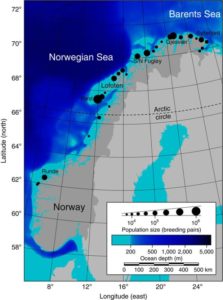
As the map shows, you can find 18 of the 20 largest bird mountains in Northern Norway.
Map: seapop.no
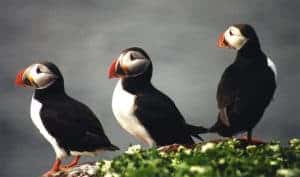
Lund. Photo: Wikipedia.org
TFO 2019 – The oil industry's wish list

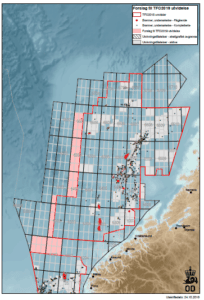
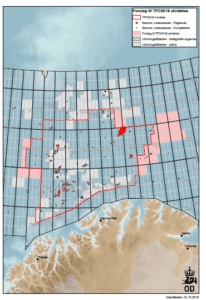
Map: Norwegian Petroleum Directorate
These (pink fields) are the pre-defined assignees
the areas for 2019 from the Ministry of Petroleum and Energy.
Despite large sea areas, there is no room for more petroleum activity in the sea areas, without it coming into conflict with fisheries or vulnerable areas.
also read The Swedish Environmental Protection Agency's consultation statement on offshore wind here.



